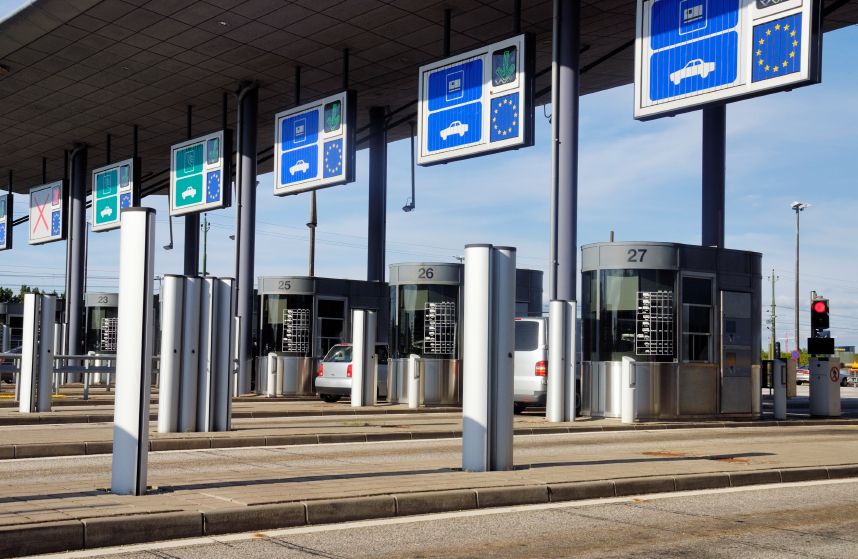Most countries find it difficult or even impossible to provide sufficient resources for the optimal maintenance and rehabilitation of their roads. Road infrastructure has a very long life if maintained properly, however rapid growth of traffic, and goods vehicles in particular, exert pressures on both the capacity and road pavement performance.
This deterioration is costly to existing road users as their vehicle operating costs increase and they suffer from the negative effects of increasing congestion. There are concerns on social and environmental grounds, as road safety deteriorates and vehicle emissions rise.
Traditionally the public sector repairs deteriorating roads from its fiscal budgets. However, if fiscal budgets are constrained, roads will continue to deteriorate and economic, social and environmental costs will increase. Many countries have tried to combat this by levying charges on road users. These revenues already provide a much-needed source of funds to expand and maintain road networks in countries as diverse as Brazil, Ghana, India, Japan, Mozambique, Russia, South Africa, the United Kingdom and the United States of America.
Why charge?
Charging road users provides the following benefits to the public sector:
- New, stable and dedicated source of funding and finance. Charges provide an incremental and ongoing revenue source, which is not tied to the annual government budgetary process; and importantly can be used as collateral to raise third-party finance (e.g. project finance/PPPs) to fund further expansion of the road network.
- Applies the ‘User Pays’ principle and the internalisation of external costs. Some governments have introduced charges in pursuit of a general policy to increase the extent of "use-related payment" within a 'sustainable' transport policy.
- Facilitates private sector development. The involvement of the private sector can allow the government to finance at least part of the road network development ‘off balance sheet’.
It is crucial that a government considering road user charging establishes clear objectives in pursuing a charging policy as these objectives will direct all activities undertaken (both in the early years and during the operation of the road as regulatory questions arise) and will influence the final tariffs charged to road users.
Potential consequences of charging
Intentional and unintentional consequences of charging may include:
- Cost recovery. Revenues may not be sufficient to cover all costs, including construction, operation and maintenance. In developing countries where traffic levels are low or where construction costs are high, it is unlikely that the revenues will ever cover more than operation and maintenance and perhaps a part of the construction cost.
- Revenue risk. Whether the risk is held by the public sector, the private sector or shared, there is always a risk that outturn revenues may be insufficient to cover debt payments and operating costs which may lead to bankruptcy or sovereign debt guarantees to banks for payment of the debt.
- Diversion of traffic away from the new road. Price elasticity of demand and the provision of free alternatives to the charged road, will affect the level of traffic on the facility. In turn this may mean that some potential economic benefits of the new road are lost since the objective of new roads is to move people and goods more reliably and quickly.
- Social impacts. Charged roads can have positive and negative social impacts. Of particular concern is the potential inequity that can result from charging low-income users, particularly those who use the road frequently.
- Political and public opposition. Political opposition to road charging has been significant in some countries. Motorists often perceive that they are paying for the road twice, by paying a charge and through their taxes, when in fact their taxes are being used to fund other roads.
What charge to levy?
In reality, charges are a compromise between financial needs and economic benefits (i.e. they provide sufficient revenue to service loans or recover budget but are not so high to make them unaffordable or to seriously discourage their use by motorists).
The level of charge is highly dependent on the level of cost-recovery desired. Charges can be:
- Revenue-maximizing. To recover as much of the cost, operation and maintenance of the facility as possible.
- Welfare-maximizing. To recover a contribution to the operating and maintenance costs of the facility whilst maximizing the economic and social benefit of the infrastructure.
- Operation and Maintenance Cost Recovery. To recover the ongoing operating and maintenance costs of the facility (the construction cost having been paid out of government budgets).
Charges will also vary according to: vehicle classification; time of day/day of week; cost of road construction; social considerations (e.g. High Occupancy Toll lanes); geographical area (e.g. London Congestion Charge); and loyalty programmes.
Other systems of area charging rely less directly on road use. Vignette systems are generally economical to operate, overcome criticisms of inequity by charging flat fees for access to the road network and provide an incentive to users to maximize their use of the roads rather than use less safe and more congested roads.
How to charge equitably and proportionally?
A charging strategy should be designed to ensure that no road users are severely disadvantaged in comparison with other road users. Various strategies are used in practice to promote charging on an equitable basis.
- Level of service improvements. Charges should only be introduced on roads which have received significant upgrading or on new roads of a high standard.
- Local and frequent user discounts. Local and frequent discounts should be considered to reduce the financial burden on road users.
- Provision of a parallel charge-free alternative. A free parallel road ensures that those unable or unwilling to pay a charge can still have access to the road network.
- Discounts by payment method. The cost of collecting road user charges varies according to the technology installed. Many concessions reward their users with discounts when they use more cost-effective payment techniques, such as electronic tags.
- Distance between charging points. Some countries specify the distance between charging points to ensure that users are not over-burdened with payment requests and to allow free local movements between charging points.
- Cross subsidy between different parts of the network. Some existing roads are charged in order to provide revenue for construction of new sections of the road network.
In conclusion, road user charging can provide a new, stable and dedicated source of funding for road infrastructure. By applying the ‘user pays’ principle, governments can direct scarce budget resources elsewhere and the road user pays for the service offered by the road in the same way that railways, pipelines, power grids, water, broadcasting and broadband networks are paid for. However, road user charges should strike a balance between social, environmental and financial constraints, ranging from those that maximise revenue to those that maximise welfare.
Potential consequences of charging include the uncertainty that revenues will be sufficient to cover all the costs of construction, maintenance and operation (revenue risk). Toll roads are rarely self-financing, often still requiring substantial public subsidy and may create long term liabilities for governments. High charges can result in diversion onto less suitable routes, resulting in the loss of some of the potential economic benefits of the road accruing from improvements in travel time reliability, time savings, vehicle operating costs and road safety.
* This article is a summary of an Executive Brief prepared by Matt Bull and Anita Mauchan for the Public-Private Infrastructure Advisory Facility (PPIAF) of the World Bank. The full article can be found here.

